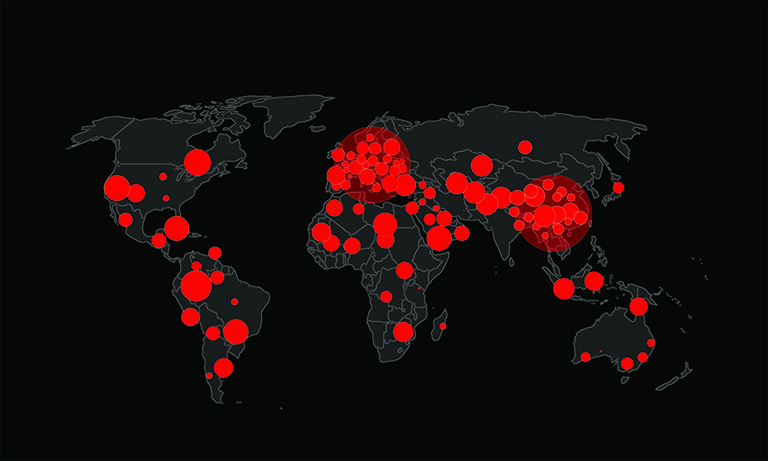FatalRAT Phishing Attacks: A Persistent Cyber Threat in the APAC Region

Table of Contents
An Evolving Phishing Campaign Targeting Industrial Sectors
Another wave of phishing campaigns has been identified targeting organizations across the Asia-Pacific region. These attacks are linked to the distribution of FatalRAT, a remote access trojan (RAT) that grants unauthorized control over compromised systems. The affected sectors include government institutions and industries such as manufacturing, construction, telecommunications, healthcare, energy, and logistics.
The adversaries behind this campaign have deployed a sophisticated delivery framework designed to evade detection. Utilizing widely recognized Chinese cloud services such as MyQcloud and Youdao Cloud Notes, the attackers have established an infrastructure that disguises their activities as legitimate network traffic.
The Goal Behind FatalRAT Attacks
The primary objective of these phishing campaigns is to infiltrate targeted organizations and establish persistent remote access. This enables attackers to gather confidential data, manipulate system operations, and deploy additional malicious tools. The use of FatalRAT allows for extensive control over infected machines, including the ability to log keystrokes, interfere with system files, monitor user activities, and disrupt security measures.
One notable aspect of this campaign is its focus on individuals who communicate in Chinese. The phishing emails contain attachments with Chinese-language filenames, increasing the likelihood that recipients will open them without suspicion. Past incidents have also linked FatalRAT to fraudulent Google Ads, further demonstrating its diverse distribution tactics.
The Technical Breakdown of the Attack Chain
The attack typically begins with an email carrying a compressed file. Once opened, the file initiates the first-stage loader, which reaches out to the Youdao Cloud Notes platform to retrieve a secondary payload. This payload consists of a Dynamic Link Library (DLL) file and a configuration module. The latter downloads additional attack components while simultaneously displaying a harmless decoy file to reduce suspicion.
The DLL serves as a second-stage loader responsible for installing FatalRAT on the victim’s system. The malware is retrieved from a remote server hosted on MyQcloud, and to further conceal its presence, the attack chain utilizes DLL side-loading techniques. This method allows FatalRAT to run within legitimate software processes, making it harder for security systems to detect. Additionally, a deceptive error message is displayed to the user, making it appear as though the application failed to launch properly.
The Implications of FatalRAT’s Capabilities
Once activated, FatalRAT conducts an extensive security check to determine if it is running in a controlled or monitored environment, such as a sandbox or virtual machine. If any anomalies are detected, the malware ceases execution to avoid exposure.
If the malware deems the environment safe, it proceeds with a range of actions. FatalRAT can collect system information, terminate certain background processes, and search for installed security tools. Additionally, it is capable of modifying browser data, executing commands remotely, and even interfering with core system functions, such as the Master Boot Record (MBR), which is essential for a system’s startup process.
Another concerning feature of FatalRAT is its ability to download and install third-party remote administration tools like AnyDesk and UltraViewer. By doing so, attackers gain another layer of control, allowing them to execute actions on the compromised system manually. The potential for spreading across networks further increases the risk of widespread disruption.
Attribution and Possible Threat Actors
The entity responsible for these campaigns has yet to be definitively identified. However, multiple indications suggest that a Chinese-speaking threat group may be involved. There are similarities between this campaign and previous attacks linked to Silver Fox APT, an advanced persistent threat group known for targeting Chinese-speaking individuals and organizations in Japan.
The repeated use of Chinese cloud services, Chinese-language interfaces, and other operational patterns reinforce the likelihood that the attackers are familiar with or based in China. While it remains unclear whether a single group is responsible or if multiple actors are carrying out separate but related attacks, the continued emergence of FatalRAT campaigns indicates that these operations are well-coordinated.
Bottom Line
The strategic use of trusted cloud services and multi-stage delivery techniques makes FatalRAT a challenging threat to mitigate. Organizations operating in the targeted sectors should remain vigilant against phishing attempts and implement strict cybersecurity protocols to prevent unauthorized access.
While the exact motivations behind the campaign remain uncertain, FatalRAT's ability to steal, delete, and manipulate sensitive data underscores the necessity for enhanced security awareness and proactive threat defense strategies. Given the evolving nature of these phishing attacks, continued research and monitoring are essential to limiting their impact on businesses and government entities alike.








